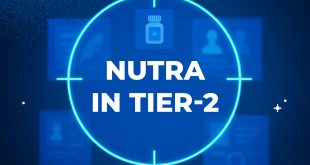It is not enough to get traffic, you also need to monetize it. And not just drive it to the same old unchanged landing page, but rather show each attracted user something that can hook them. The easiest and most effective way to squeeze out the maximum conversion is by segmenting the flow. Each affiliate marketer searches for the optimum by distributing visitors to the most relevant offers. It comes as no surprise that ideas for automating routine tasks have emerged; smartlink affiliate programs have become the prime choice of webmasters and affiliates.
Since they receive a significant share of the advertising revenue, such giants like Google, Yandex do everything possible to collect information about the preferences and interests of the user in order to show them a relevant ad in Direct or Adsense that would actually interest them and therefore increase the chance of them clicking it. The user themself describe their interests in search queries, the results they click on, by visiting websites with counting devices. A sort of an individual dossier is formed by the users cookies and “fingerprints” in the search engine databases.
But these are giants. The usual everyday life of a webmaster is filled not only with efforts to attract visitors, but also with routine actions like analyzing statistics, monitoring landing pages, finding new ones, and again the chain “experiment – analysis – control”.
Each affiliate has the opportunity to distribute the attracted visitors by:
- GEO (more or less);
- browser;
- device type;
- topic;
- source (referrer or utm tags), etc.
It all depends on the capabilities of the TDS and, naturally, on the sophistication of the algorithms for the abovementioned distribution. But creating such a visitor profile is half the battle; you also need to decide where to send it. You’re forced to experiment, drive traffic from different GEOs, referrers, device type and other parameters up to the time of day, combine these different parameters, then analyze the conversion results after each try.
All the while, you’re losing money – the experiments cost a hefty price. Even a “ready-made recipe” needs to be constantly monitored. According to the experience of our team, the stories of our partners, there are frequent cases of successful set-ups of the traffic flow, everything is fine, and then after a couple of days the conversion rate sags. If you don’t notice it in time, it means that you’re driving traffic to God knows where with zero results. Excel charts, constant monitoring of statistics in affiliate programs’ accounts – sounds familiar, doesn’t it?
Next, I want to share my experience in solving the “where should I drive traffic to” problem. You may have already heard about smartlinks, but someone else’s experience is never superfluous and can save you time and money. Those readers who are not aware of the capabilities of Smartlink will be interested to learn what it is, and, perhaps, try it.
I believe that in many cases such a universal solution is justified, since you can focus most of your time on actually looking for traffic. However, Smartlink isn’t just a money button – sometimes it is far from the best choice. Later on in the article I want to talk about this interesting question regarding how appropriate Smartlinks are in certain situations.
Table of contents
What is a Smartlink?
Although it actually is a bit more complicated than that.
A Smartlink is a set of scripts installed by an affiliate program and configured in a certain way so that, after receiving a visitor from the program’s partner, it would analyze their data and send them to the optimal version of the landing page or show the optimal ad, banner, offer. Optimal implies that the ad is in the user’s language, in his GEO, relevant to their query and referrer, interests etc.
The main highlight is that the system is self-learning, as a rule, they are built on neural networks. Unlike the manual method, the decision about where to send a particular visitor and what to show to them is based not on the webmaster’s assumption, but rather on a comprehensive analysis of similar situations in the experience of the system. It tracks not just the ROI of the flow, but also the conversion of each user.
Behavioral analysis is carried out from the moment the user enters the input URL and until they make a purchase or perform another task on the landing page. For this purpose the landing pages have built-in scripts that notify the system about specific user actions. The availability of the landing pages themselves, their conversions are constantly updated, in case of a sudden drop in efficiency or once the sales or installations cap is reached, in which case the user will be redirected to the next most profitable offer.
How does it work?
Advertisers add new niche landing pages and offers to the affiliate program, and creatives also need to be refreshed regularly. As a result, we get a lot of landing pages for different countries, and even cities, with different sets of offers, design options, versions for mobile phones and desktops. And all this is rolled out in front of the webmasters – choose what is more profitable for you, here is a list of links to different options.
According to the “classical” scheme, the webmaster opens the TDS and it provides them with info about the GEO, device time, language etc. Then, by trial and error, they start driving traffic to different offers that are suitable for the GEO and the device type, all the while adjusting the settings for their TDS. The options are endless, but experiments cost money, so most just fiddle around with the main GEO settings.
For TIER1 countries, the situation is even more complicated, but they are usually grouped according to the language (English-speaking, Spanish-speaking, French-speaking, etc. countries), or according to wealth (Luxembourg, Switzerland, Sweden, Canada). More detailed targeting (by cities) will simply take way too much time and money for experiments.
This approach has a bunch of disadvantages, with the main being: not the most optimal option is chosen, constant monitoring is required, experiments cost money, seasonal and daily preferences and interests of the audience are practically not taken into account, and traffic from an undefined GEO goes to backlink according to the principle “better than nothing”.
Now about the cons. More and more affiliate programs are using the Smartlink system. For that purpose the programmers of the affiliate program jot down a set of scripts, prescribe matches, and that allows you to immediately and without tests drive traffic to a single URL or request a promo in a uniform manner. The system learns on the go, offers the best option for any request, and monitors conversion.
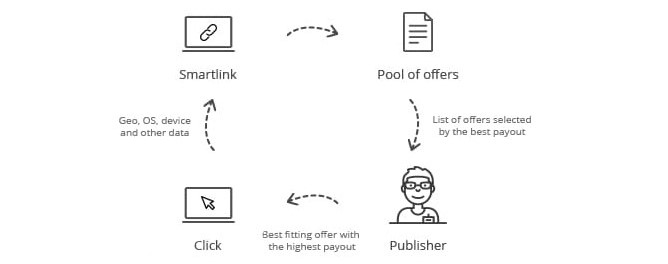
You can check whether the offer you chose offers Smartlink in your account or just by asking tech support. By the way, the support service can also help with choosing an offer by asking about the sources of visitors. After that it’s painfully simple – you look for traffic and just leave the rest to the machine. There’s no need to conduct tests or monitor – there’s one URL for the entire flow of traffic.
Is everything so rosy, and how universal is the Smartlink? Let’s get to the bottom of this.
Smartlink advantages
As already mentioned, the most important benefit is convenience. Look for an offer that has Smartlink and that’s it, no further efforts are needed for the visitors to go the optimal (from the point of view of the system) way.
A computer, when evaluating and controlling, makes fewer mistakes than a human.
Geosegmentation (when available) can be set down to the subway stations. The system squeezes out the maximum potential, in most cases a suitable offer will be found even for “rare” countries. And the smartlink is able to roughly determine the scope of interests of the visitor, let alone the language or the type of mobile device. Learning on the go allows the system to take into account temporal and seasonal subtleties of distribution, without doing tests and without being puzzled by constant monitoring. No money or time is wasted on testing.
Some traffic is impossible or too time-consuming to distribute, you can drive it all to one link, directly from the sources.
From the point of view of the affiliate program, there are also only pros. The ability to use smartlink attracts new suppliers, and adding new niche offers is not a problem, just make a promo and set up basic ideas for its targeting in the system, and watch the relevant visitors be automatically distributed to the offer, and the longer you let the system do its thing, the better the quality of the incoming traffic.
Smartlink disadvantages
Smartlink also has certain disadvantages, knowledge of which is necessary to understand when driving traffic the old fashioned way will be more profitable.
Let’s start with the fact that the decision-making mechanism itself in the smartlink cannot be studied or evaluated, the system doesn’t explain its reasoning for the redirects it performs. So we’re forced to just trust the algorithm that the choice it made was the best one. And you can’t change the algorithm either. For example, you drove some traffic for a while and got a ROI of 70%. Not a bad result, but without checking the system’s details it’s impossible to say whether or not the result would’ve been better had we used several different ad campaigns instead of this unified one. You get sort of a “I could’ve done this better on my own” nagging feeling.
The same is true when you get a negative result. You’re left with a negative impression of the Smartlink technology, even though the campaign may have failed because the niche was too narrow and the affiliate program just couldn’t find suitable offers for it, even setting up the campaign manually wouldn’t have helped.
Smartlink determines the interests of the user, but if several people use the same IP to go online, the results will be inaccurate. This happens with VPN surfers, corporate networks, small ISPs.
From the point of view of the affiliate program, in order for the offer to receive the correct rating in the system, it is necessary that a certain amount of traffic flow through it. New offers will “float” in terms of profitability for some time, however, without smartlink, this will be an even bigger problem.
When SmartLink is worth it and when it isn’t
These are the visitors:
- from social networks or instant messengers. Their distribution by GEO is difficult, because the profile info doesn’t always coincide with where the user actually currently resides;
- that need a little final push. Linkbacks and exits even from a well-distributed source will get another chance;
- mixed traffic, for example, from dubious affiliate programs, or from doorways that got into the search results from unrelated queries.
All this makes Smartlink very useful when working with the dating niche, in fact, there are more offers for this topic than for any other.
But if you’re already familiar with the offer, you already experimented with them or they come from targeted sources – in this case, smartlink will be a hindrance. It will ensure you don’t go into the red, but thanks to the possibility to manually adjust the campaign, the “classic” method will be more effective.
Verticals and Smartlink
Verticals (marketing directions) have their own nuances when it comes to Smartlink, since the system isn’t yet capable of doing everything a human can.
- dating, including adult dating. Super popular, especially for visitors from social networks – after all, that’s why people use social media – to meet new people. There are many dating offers, the competition is incredibly stiff, but there are also enough niches. Even a beginner can experiment with at least some form of distribution (men). The main thing is to choose an affiliate program where the Smartlink covers the necessary countries;
- the opposite – nutra (health and beauty). Requires a predominantly female audience, traffic from social networks, teasers. The vertical requires working with traffic sources, but the payouts, in turn, are pretty generous.
- Sweepstakes (prizes) and pinsabmites (subscriptions) are developing and converting well. For “pushing” linkbacks and exits, smartlink will be a real godsend;
- gambling, insurance, finance (forex, loans). The point of Smartlink is in the selection of the most suitable offer, it is better to drive traffic from places swamped with typical customers;
- eCommerce (just selling products over the Internet). In my opinion, a rather complex vertical. It requires not only detailed geo segmentation, but also finding narrowly targeted customers for each product. I do not recommend it for affiliate marketing beginners.
Smartlink can be useful in any vertical, but when selecting offers, if you are striving to achieve the best possible result, you need to clearly understand where the traffic is coming from and what might interest the audience.
Best offers to use Smartlink for
Here you can find offers for any vertical, but here’s the most popular ones, with wide GEO coverage and for different types of audience.
1XBET
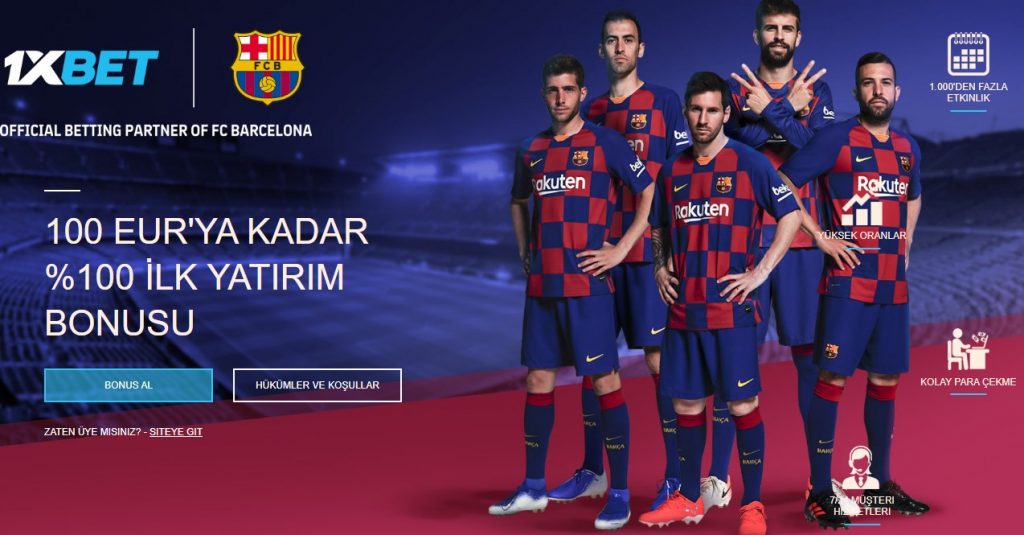
A very popular offer that both beginners and experienced affiliate marketers choose. The reason for the high conversion is simple: depending on the GEO, the landing page is adapted not only in terms of language, but also in terms of which sports and events are more relevant to the people of the country in question. There are quite a lot of countries from which the traffic comest, and Smartlink is fully justified here.
General information:
- Vertical: Casino & betting.
- Payout model: CPA up to $50 for the first deposit.
- GEO: Bulgaria, Finland, Turkey, Norway, Latvia. The coverage is expanding.
- Target audience: men with an above average income, gambling, 18+.
- Prohibited traffic sources: contextual ads that mention the name of the offer, PopUp, PopUnder, email spam.
DIETONUS
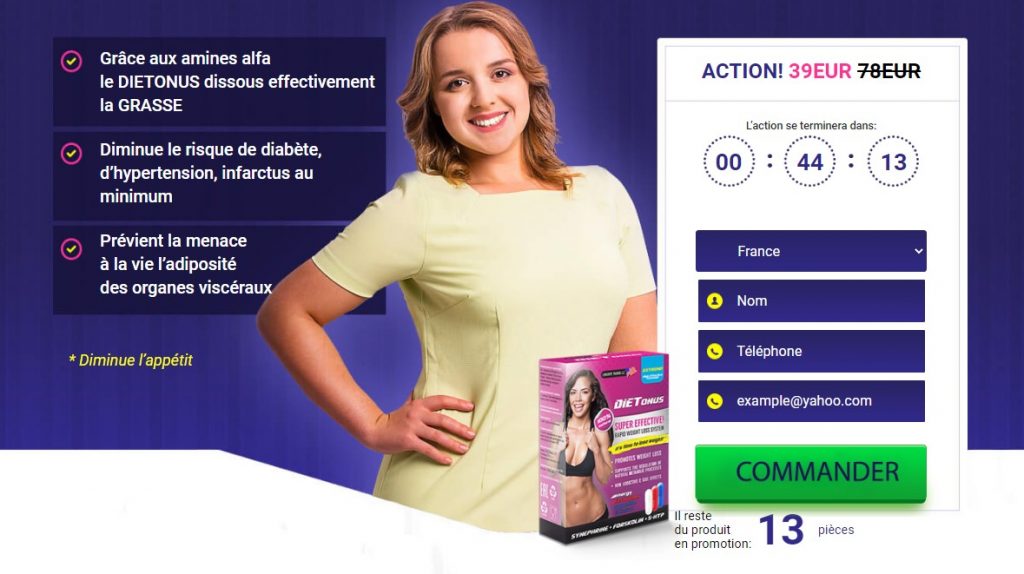
This is an offer for the fairer sex. The offer is the sale of dietary supplements for weight loss. Just as in the previous example, there are separate landing pages for different GEOs with language adaptation. It is recommended to send traffic to pre-landers, the design differs even within the same geo. Smartlink here will not only send the visitor to an ad in the suitable language, but also select the optimal design for a specific type of traffic.
General information:
- Vertical: Nutra, Weight Loss.
- Payout model: CPA up to $30 per confirmed application
- GEO: France, Great Britain, Switzerland, Belgium, Luxembourg, Netherlands.
- Target audience: women who care about their appearance, who want to lose weight, 35+.
- Prohibited traffic sources: ads targeted at people younger than 35.
SECURESAFEMEMBERS
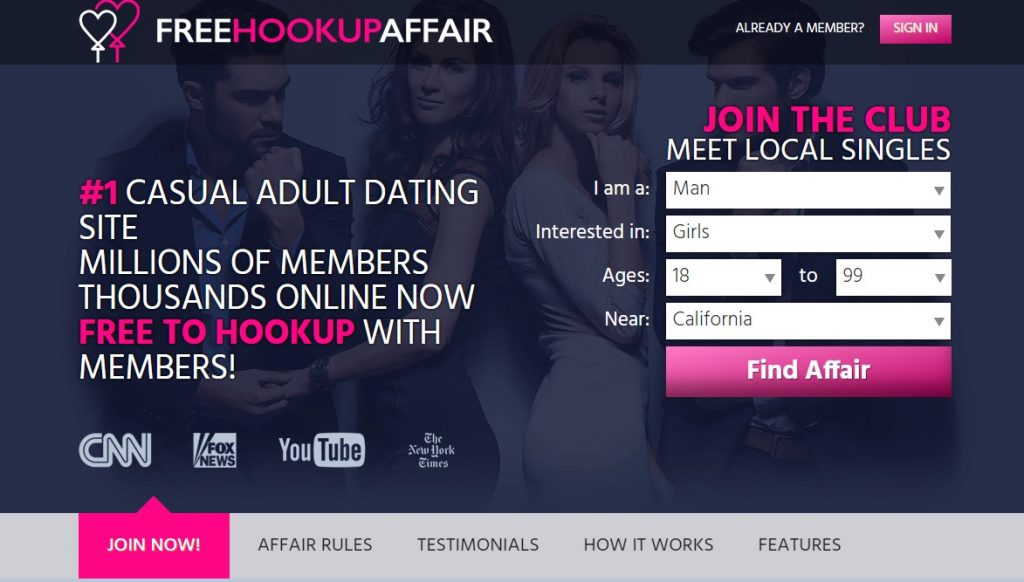
One cannot fail to mention such a venerable vertical as dating. It is still attractive, connoisseurs will notice that leads bring income not only from registrations, but also from subsequent donations. A very versatile niche, it also converts a major part of adult traffic, one might say the two go hand in hand.
The target audience includes not only men, but also women. In a word, versatility at its finest, you just need to sort by interests, geo (there are many countries) and there’s your profit. The entire technical side of the matter is quite within Smartlink’s scope of abilities.
General information:
- Vertical: Dating.
- Payout model: CPL (SOI) $4.5 per registration.
- GEO: USA, UK, France, Australia, Switzerland, Belgium, Finland, Canada, New Zealand, Africa, Norway.
- Target audience: men and women interested in dating, relationships and sex.
- Prohibited traffic sources: naturally, fraud is prohibited. Hold – 30 days.
VULKAN VEGAS

An offer for those who work with the gambling niche, but the traffic is mixed, both by geo and by age. It usually comes from social media, since the location indicated in the profile doesn’t always coincide with the person’s real one. The same goes with age and interests – people often fake those too.
Vulkan accepts traffic from both the Russian segment of the Internet as well as from TIER1 countries. There are adapted landing pages for countries, both in terms of language and design, even of topic (for the first visit, a registration bonus is offered, then deposit prizes, etc.). In such a situation it’s impossible to to make out all the subtleties, so a smartlink is absolutely necessary. Accepts visitors by direct link (ClickUnder, PopUnder are accepted).
General information:
- Vertical: Casino & betting.
- GEO: Russia, Bulgaria, Hungary, Romania, Slovenia, Lithuania, Slovakia, Latvia, Estonia, USA, France, Canada, Germany.
- Payout model: СРА $85 per first deposit.
- Target audience: gamblers 18+.
- Restrictions: Hold – 21 days.
VR FUCKDOLLS

This offer is suitable for converting traffic from backlinks, PopUnders, PopUps and other traffic of unspecified origin. An advantage is that all sources of traffic are accepted. Erotic games, a mixture of adult content and gaming, is a dynamically developing vertical that anyone can be persuaded to try, given the correct landing page design.
And Smartlink is just the tool you need to determine which landing page will provide the best conversion for the type of traffic in question, or even to sort of squeeze the last juices out of them. Besides, the landing pages are adapted for many different countries.
General information:
- Vertical: Gaming.
- GEO: USA, Europe, Australia.
- Payout model: СРА $8-56 per confirmed application, depending on the level of the country’s economic development.
- Target audience: men, prone to gambling 18+.
- Prohibited source: click-fraud, contextual ads that mention the name of the offer.
- Hold: 30 days.
This, of course, is not the whole list of offers with smartlinks. By studying the conditions you can find the offer that suits you best, or just trust one of tech support’s pros. After reading the conditions, you can choose the most suitable one, or trust the support professionals – just tell them about the source of the traffic, your previous experience
Cases of working with SmartLink
The wide variety of offers from affiliate programs that use Smartlink is great and everything, but what about real results? Let’s have a look at a few.
Case 1
- Topic – finances (loans from MFOs), source – push-notifications placed through the Megapu.sh service. To bypass restrictions and collect additional statistics a pre-landing page was added to the advertising campaign.
- Receiving end – the Webbankir offer with Smartlink. No distinctions were made when buying traffic by GEO within Russia, except that a predominantly male audience was selected (cars, gambling).
- Timeframe – a week, from September 27 to October 4, 2020.
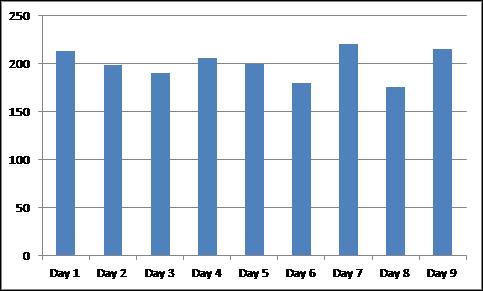
Costs: $924. Revenue: $1800. We see $876 worth of profit, thanks to Smartlink, with minimal time and money spent on setting up a campaign for traffic of very contradictory quality.
Case 2
Dating, the case can be used as a model for beginners.
- Timeframe – February 11-21, 2020.
- Again, push-notifications (through evadav.com) were the chosen traffic source. You can place your own promo materials on this website, so the creatives were taken from Adplexity, with the text on them being slightly edited using Google Translate. The traffic was driven to the Securesafemembers offer. The subdivision of traffic depending on device type was especially pleasing – another benefit of Smartlink. We got lucky that Valentine’s day was right in the middle of the case’s timeframe – to some extent this warmed up the audience.
- Countries: USA, Canada, Germany, Great Britain, Norway, Denmark, Switzerland, the wealthiest in my opinion.
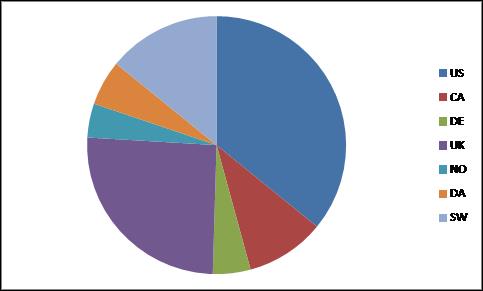
We had the best results in the US and UK, so the US rate was raised from the $0.005 proposed at the time to $0.06, and this correction worked well, the profits started coming faster.
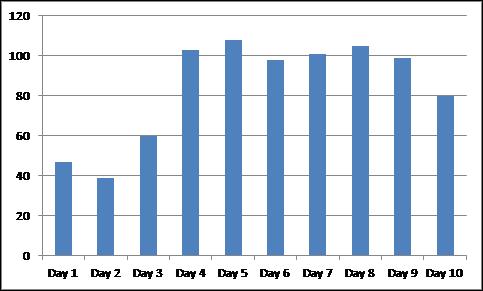
Experiment results. Costs: $300 (the experiment stopped, once this point was reached). Revenue in 10 days: $840. Profit: $540. Average CR 6.7%.
Conclusions – smartlink did an excellent job, but you still need to look into the stats yourself, a timely correction of the CPC (rate) helps not to miss the opportunity to secure even more profits.
Conclusion
The conclusion suggests itself, the “instant cash” button is yet to be invented, you still need to actually think and experiment. In the form of Smartlink, we got an assistant that helps to work with hard-to-distribute traffic; the system has its own special features, which perfectly match the ligaments in various unpredictable situations. For effort-consuming niches that depend on geo or device type with mixed traffic, this is the best choice, but if we already possess the information about the sources, distribution, interests, setting up the ad campaign is best done manually.



